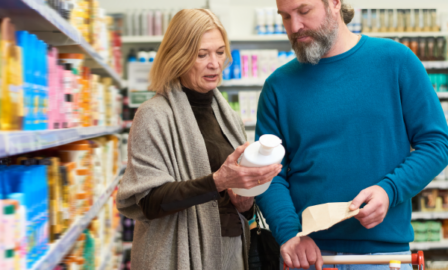2021 Beauty and Personal Care Trends
Read our updated report here: 2022 Beauty and Personal Care Trends Report
The world of beauty is ever evolving as it is a continuous and fluid expression of societal norms and aesthetic ideals. 2020, a year characterized by disruption and change, has led to widespread, systemic changes in the beauty and personal care industry. Diversity and inclusion have risen to a business-critical scale, forcing businesses to rethink traditional business models and approaches. In the wake of the global COVID-19 pandemic, trends in natural beauty, at-home beauty, and eCommerce have rapidly accelerated while other trends, like sustainability has taken on new dimensions.
The sum of these shifting trends have forced businesses to rethink how they strategize and operate. Meeting these trends requires beauty and personal care leaders to incorporate a deep understanding of their consumer into decision-making.
Download the Full 2021 Beauty and Personal Care Trends Here
2021 Beauty and Personal Care Trends
TREND #1: Adapting to Evolving Consumer Dynamics and Preferences
Beauty and personal care have been a long-standing and sizeable portion of consumers’ budgets for quite some time. Even during times of economic hardship, the beauty industry has proven to be relatively resilient. In 2020, this resilience has been heavily tested, as consumers have drifted away from traditional make-up and cosmetics in favor of products oriented towards self-care.
Prioritizing ‘natural’ in the makeup aesthetic is not a new trend, but in 2020, it became a norm. With the onset of stay-at-home orders and a digitized workplace, many people began to prioritize comfort in their personal choices; these choices included in meals, clothes, and even personal care. More people began to see themselves without makeup as their natural selves, and therefore invest in beauty products that enhance, not change, that appearance.
Makeup and fragrance sales were down by 40 percent compared with skin care, which was only down 20 percent.
Download the Full 2021 Beauty and Personal Care Trends Here
TREND #2: Taking Diversity and Inclusion a Step Further
In light of recent social movements in the U.S., inclusivity and diversity have become a top priority in personal care, as consumers urge companies to cater their products and business to all people. This push spans the entire spectrum of personal care products including skincare, haircare, and beauty, as consumers of different ethnicities, genders, races, and abilities have differing needs from each category.
Skincare personalization is emerging as a trend, as eight out of ten surveyed consumers say they have purchased personalized skin care, while 35% report spending, on average, up to $100 on personalized options. When online, 52% have taken an online skin care quiz to help identify personalized product options. Depending on the product, 77% of consumers say they trust these kinds of online quizzes to suggest products that suit their needs. Nearly 74% say they sometimes make a purchase after taking a quiz, with only 3% saying they never buy the recommended products.
As skincare customization remains on a steady growth path, it paves the way for other sectors in the beauty industry. Haircare, makeup, and personal care are expected to follow. Mass production of personalized and custom products has the potential to lead to significant waste so businesses will need to balance meeting this seemingly permanent trend with sustainable, eco-friendly practices. Understanding and adapting to the complexity of this business model will require new supply chain and manufacturing channels and capabilities.
Addressing diversity and inclusion externally in branding, marketing, and communications has also risen dramatically as a consumer expectation. Consumers are using their conscience and ethical position to inform their purchasing decisions, requiring that brands demonstrate their commitment to similar ideals. Demonstrating diversity and inclusion authentically goes beyond a marketing campaign and requires a deep commitment across the business.
Since the pandemic, Ulta’s virtual try-on beauty tool, GLAM lab has seen engagement increase seven-fold, and more than 50 million shades of foundation have been swatched digitally with the app post-COVID.
Download the Full 2021 Beauty and Personal Care Trends Here
Read last year’s Beauty and Personal Care Industry Trends Report here.
Subscribe to Clarkston's Insights
Contributions by Aley Morris and Alexandra Hatsios.



